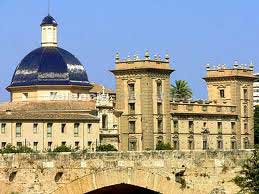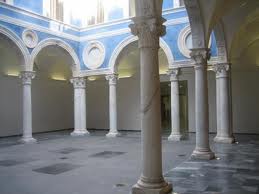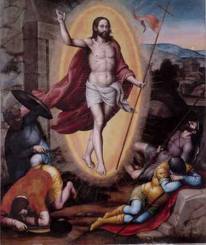Spanish Museums: Valencia: Museum of Fine Arts of Valencia

The Museum of Fine Arts of Valencia (Museo de Bellas Artes de Valencia) is considered to be the most important art museum in the community of Valencia. The museum's focus is on painting by Valencian artists, but the museum also contains sections for sculpture, archaeology and contemporary art.
History
The museum's history is closely linked to that of the 'Real Academia de Bellas Artes de San Carlos' (Royal Academy of Fine Arts of San Carlos) in Valencia. This school often created statues for the Spanish King, Carlos III, and so after some years they had built up a small collection of works by both the students and the masters in the schools. This small collection of works would become the basis of the museum's collection.

In 1812, under the French occupation of Spain, including the city of Valencia, a Marshall by the name of Luis Gabriel Suchet expressed his wish to set up a museum in the city dedicated to painting, sculpture, medals, and books that had been acquired from convents in the area. However when peace was restored and the goverment was reinstated, all of the works collected had to be returned to their original locations and Suchet's hope was dashed.
The final push for the museum came in the form of the period of artwork seizures from convents and churches that came under the direction of Mendizábal from 1835 to 1837. These confiscated pieces of art formed the main part of the museum's collection today. The works were finally moved to the museum's building which then opened in 1839.
During the Spanish Civil War, the museum was disbanded and the building was used as a store for the artistic treasures of Spain, which mostly came from the capital, Madrid. After the war, the building had been severely damaged and so it was decided that the museum should reopen in a new building, 'Colegio Seminario de San Pío V' (Seminary College of Saint Pius V), which is where the Museum of Fine Arts of Valencia can still be found.
The Building
The Museum of Fine Arts of Valencia is located in the Colegio Seminario de San Pío V which was founded by the archbishop of Valencia in the 17th Century. The Baroque style plans for the building were drawn up by a local Spanish architect, Juan Bautista Pérez Castiel, and construction began in 1683.
The building itself is split into two parts: the temple and the school. The school section is a square shaped building with cloisters. On either side of the facade are two towers which at the time of its construction were more commonly seen in monasteries and palaces in the city of Valencia.
The temple is joined to the school section, however it is built with an octagonal floor plan. One of the most outstanding features of the temple is its large glass dome, made out of blue glass. This dome had to be reconstructed in 1925 after it was severely damaged in the proceeding years.
In the last few decades, the museum has undergone a series of restorations and expansions under the guidance of the architects, Manuel Portaceli and Álvaro Gómez-Ferrer. From the late 1980s and into the 1990s, the museum saw many changes that included the modernization of one side of the building and the addition of many new rooms such as the two large rooms used for temporary exhibitions at the museum.
The Collection

The collection at the Museum of Fine Arts of Valencia is extremely large and varied. The timeline of the works of art that are on display in this Spanish museum goes mainly from the gothic period to the 19th and 20th Centuries.
The museum's main section is on the art of the Gothic and Renaissance periods. However, some of the highlights of the museum can be found in the later periods of history. Within this Spanish museum's walls can be found works by Francisco de Goya, El Greco, Murillo and Velázquez, along with other big names in the Spanish art world.
